Ueli Steck: “I accept the risk”
Actually, Ueli Steck only wanted to do an active holiday in Tibet in autumn 2014. The 38-year-old top climber from Switzerland planned to climb the eight-thousander Shishapangma with his wife Nicole via the normal route. It soon became clear that it would not be as easy as it seemed first because there was too much snow on the mountain. “But just sitting around in the base camp, that’s really not my thing”, Ueli told me last week at the trade fair ISPO in Munich. “Thus I accompanied the guys in their summit attempt.” These guys were the German ski mountaineers Benedikt Boehm, Sebastian Haag and Martin Maier and the Italian Andrea Zambaldi. In the summit area, an avalanche descended: Haag and Zambaldi died, Maier survived seriously injured. Only Steck and Boehm were not swept away by the avalanche. Reason enough to talk with Ueli about risk and luck:
Ueli, people say, a cat has nine lives. How many lives do you have?
![]() read more
read more
Dujmovits: “I want to make it for myself”
His bookmark is still in the book of Everest. Ralf Dujmovits scaled all 14 eight-thousanders, as the only German so far. Only on Mount Everest in 1992, Ralf used bottled oxygen – something that the 53-year-old sees as a blemish by today. This spring, Ralf wants to travel to the highest mountain in the world for the already seventh time, for the fourth time to the Tibetan north side. Last year Dujmovits reached there an altitude of 8,300 meters on the northeast ridge. At that time he got angry about his own mistakes. And so Ralf’s repeatedly announced “definitely last” attempt on Everest became once again just his most recent try. This year, he wants to climb in a team with the Canadian Nancy Hansen. I met Ralf at the trade fair ISPO in Munich and asked him about his Everest plans:
Ralf and Mount Everest, a never ending story?
![]() read more
read more
Moro: “I trusted them to succeed“
Over an out. The Russian winter expedition on Nanga Parbat is finished. Nickolay Totmjanin, Valery Shamalo, Serguey Kondrashkin and Victor Koval decided to go home. “Today is exactly the 45th day since we left St. Petersburg, and, unfortunately, the time for our expedition runs to the end. The mountain is clear at last, for the first time in two weeks, but there’re still snow flags on the top due to the strong wind“, the four climbers told Russianclimb via SMS. “We pack Base Camp and are going down.“ A few days ago, they had reached Camp 4 at 7,150 meters on the Rupal (south) side of the mountain, but had been forced back by storm and cold. Thus, only the climbers on the Diamir (north) side are staying on Nanga Parbat.
![]() read more
read more
Moody Nanga Parbat
If mountains really have a soul, Nanga Parbat obviously suffers from a full-blown winter depression. Year after year the eight-thousander in Pakistan rebuffs climbers who try to climb it first in the cold season. Almost as if to say: “Get off my back! If you bother me, see where that will get you! “ Now, this winter’s second summit attempt also failed. On the Rupal side, the south side of the mountain, Russians Nickolay Totmjanin, Valery Shamalo, Serguey Kondrashkin and Victor Koval had to turn around from Camp 4 at 7150 meters. The four climbers from St. Petersburg had tried to sit a snow storm out, with wind speeds of 100 km/h. No chance.
![]() read more
read more
She already felt the summit
“He who says patience, says courage, endurance, strength”, Baroness Marie von Ebner-Eschenbach once wrote. Of course the Austrian writer, who lived from 1830 to 1913, meant it generally. But with her words she described almost exactly the characteristics that are needed to climb an eight-thousander such as Nanga Parbat in winter. After more than two dozen unsuccessful winter expeditions, courageous, persistant and strong climbers try again to scale the ninth highest mountain on earth this winter. Currently, the attempt of the Russians Nickolay Totmjanin, Valery Shamalo, Serguey Kondrashkin and Victor Koval on the Rupal side, the south side of Nanga Parbat, seems to be the most promising try.
![]() read more
read more
f (Expedition Leader) = Authority + Open Ear
Cuddle bear or dictator – expedition leaders can be everything between these poles, always looking for the “golden way” to maximum success. How much discussion is useful, how much “Period!” necessary? In the USA, researchers now published an interesting study on the influence of hierarchy on the outcome of expeditions. They interviewed climbers from 27 countries and evaluated the data from a total of 5104 Himalayan expeditions from 1905 until 2012. Their findings: “Hierarchy both elevated and killed in the Himalayas: Expeditions from more hierarchical countries had more climbers reach the summit, but also more climbers die along the way.” Means: Strong hierarchy can increase both summit and fatality rates. On the one hand hierarchy can – due to the lack of permanent discussion – create an atmosphere leading to greater determination. On the other hand it can inhibit low-ranking team members from expressing their doubts, thus increasing the risks for the group. But how can an expedition leader find the right balance? I asked the researchers.
![]() read more
read more
Turning back 300 meters below the summit
Does Nanga Parbat show its teeth again? More than 20 winter expeditions already failed on the 8125-meter-high mountain in Pakistan. Beside K 2, Nanga Parbat is the only eight-thousander which has still not been scaled in winter. That’s why the “Naked Mountain” has been an attractive destination for professional mountaineers over the past years. The Polish climber Tomasz called Tomek Mackiewicz is trying to climb the ninth highest mountain on earth for the fifth consecutive year. After having reached an altitude of about 7200 meters with the German mountaineer David Goettler on the south side of the mountain (Rupal side) last year, Tomek is now climbing on the northwest side (Diamir side). Today he and the Frenchwoman Elisabeth Revol returned safely from a summit attempt to base camp.
![]() read more
read more
Many question marks before spring season on Everest
The same procedure on Everest as every year? Probably not, but a reliable forecast is difficult. “There seem to be less people on expeditions and also less people trekking in Nepal”, the New Zealander Russell Brice replies to my question which influence the avalanche disaster on Good Friday 2014 and the subsequent end of all great expeditions on Everest south side will have on this year’s spring season on the highest mountain in the world. “It seems that more people want to go to North side, and less people to South side”, says the head of the expedition operator Himalayan Experience. However, Brice withdrew his tendered Everest expedition in Tibet and decided to just operate on the south side this year.
![]() read more
read more
Climbers’ crowdfunding for winter expeditions
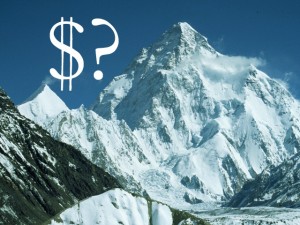 Is it just a coincidence or already a trend? The K 2 winter expedition of Denis Urubko and Italian climber Daniele Nardi’s to Nanga Parbat use crowdfunding on the Internet to get more money for the expedition budget. Anyone who had ever to write his fingers to the bone to raise money for an expedition, will understand that now climbers too choose this form of financing that was born in the digital age.
Is it just a coincidence or already a trend? The K 2 winter expedition of Denis Urubko and Italian climber Daniele Nardi’s to Nanga Parbat use crowdfunding on the Internet to get more money for the expedition budget. Anyone who had ever to write his fingers to the bone to raise money for an expedition, will understand that now climbers too choose this form of financing that was born in the digital age.
![]() read more
read more
Moro: “Winter climbs are pure exploration”
This man can not keep his hands off winter climbing. Simone Moro has already made three first winter ascents of eight-thousanders: Shishapangma (in 2005), Makalu (2009) and Gasherbrum II (2011). “I did twelve expeditions in winter”, the 47-year-old climber from Italy tells me when I meet him in my home town of Cologne. “In total, a lot of months.” I am curious about his new plan:
Simone, you have spent most of the last winters at eight-thousanders? What’s about the coming winter?
I am preparing a new project that is still secret. Not because I have something to hide but just because I am waiting for the climbing permit. At the beginning of the winter I had an idea, then I didn’t get the permit by the Chinese. So I had to change my plan. That is the reason why I don’t want to announce it before I’m one hundred percent sure. What I can tell you: I will start already in 2015, quite late, but still in winter.
What can you reveal? Will it be an eight-thousander? There were rumors that you would try the first winter ascent of Mount Everest from the north side.
![]() read more
read more
Alix von Melle: Next exit Everest?
The ridge between audacity and high spirits is narrow. And it is always a question of perspective. If a climber is to explain a beach goer why he exposes himself to the risk of falling during a mountain tour, he will mostly meet with stunned disapproval. Alix von Melle will probably face those reactions if she will really set off for Tibet next spring to climb Mount Everest. Finally, Alix had to abort a summit attempt on Makalu for health grounds last May.
![]() read more
read more
Martin Maier: “Everything seemed surreal”
Survived! On 24 September, Martin Maier was swept down 600 meters by an avalanche on the eight-thousander Shispapangma in Tibet. It was not only his friend Benedikt Boehm who called it a “small miracle”, that the 39-year-old climber from Munich did not die. The avalanche had released not far below the summit. The German ski mountaineer Sebastian Haag and the Italian Andrea Zambaldi were also caught by the avalanche and, in contrast to Maier, buried by the masses of snow. Both climbers died. Boehm and the Swiss Ueli Steck were just able to rescue themselves, when the entire slope began to slip off.
Martin Maier is recovering slowly but surely from the injuries he suffered in the accident. The engineer is not a professional climber, but has already gained a lot of experience on expeditions, inter alia to the Patagonian ice cap and to some 6000ers in South America. In 2012, he climbed the 8163-meter-high Manaslu in Nepal, the eighth highest mountain in the world. Martin told me his really incredible story of survival on Shishapangma:
Martin, how are you doing now?
I still have to struggle with many aftermaths of the avalanche and the whole tragedy, with my injuries that are yet to cure. And then of course there are always the thoughts with the friends who have died.
![]() read more
read more
A mountain, two routes and a little anger
This does not happen often. Within days top climbers from Slovenia and the UK opened two challenging new routes on a shapely 6000-meter-peak in the Indian Himalayas. The 6515-meter-high Hagshu is located in the district of Kishtwar in the crisis-hit region of Kashmir. The Slovenians Marko Prezelj, Luka Lindic and Ales Cesen reached the summit on 30 September, after they had climbed for the first time through the steep north face of Hagshu. Then the Britons Mick Fowler and Paul Ramsden opened a new route via the previously unclimbed north east face and stood at the top of the mountain on 6 October.
![]() read more
read more
Boehm: “The entire slope began to move”
Time is relative, depending on how you feel about it. Already three weeks ago? Only three weeks? This is the length of time that has passed since the avalanche on the eight-thousander Shishapangma in Tibet. On 24 September, the German ski mountaineer Sebastian Haag and the Italian Andrea Zambaldi died in an avalanche that released not far below the summit. Martin Maier, who was also swept away by the masses of snow, survived. Benedikt Boehm and the Swiss Ueli Steck were able to escape the avalanche. I call Benedict at home in Munich.
Benedict, it’s now three weeks since the avalanche on Shishapangma went down. Have you been able to come to terms with the accident?
No, not really. Immediately after the avalanche, I was involved with the rescue of Martin Maier, who had survived the avalanche as if by magic. It took two days, then we headed back home. Now I am busy again in my incredibly wonderful life that I am able to live here. As the manager of a relatively large sports brand, there are many tasks to complete, if you’ve been away for so long. That does not leave much time to come to rest. I had this time only during a couple of hours doing sports in the mountain early in the morning or late in the evening.
![]() read more
read more
Steck: “It was eerie”
Ueli Steck has done his share to lift the fog that formed around the avalanche on the eight-thousander Shishapangma one and a half week ago. Benedikt Boehm and he were a little bit higher on the slope, “when suddenly a snow slab released and swept down the three climbers below us, Sebastian Haag, Andrea Zambaldi and Martin Maier”, said Ueli in Kathmandu in an interview with the Swiss newspaper “Sonntagszeitung”. “The snow slab released almost silently. It was eerie.” Maier was able to dig himself out. “He had no serious injuries, was able to descent and meet the rescue team. He is in Germany now.”
All attempts to enter the avalanche area and search for the buried climbers Haag and Zambaldi were unsuccessful. “It was too risky. We would have caused new avalanches”, Steck said. “Finally, we had to descend. In desperation you must not make mistakes that can jeopardize other people.”
![]() read more
read more



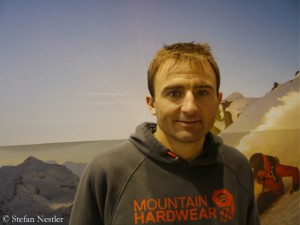

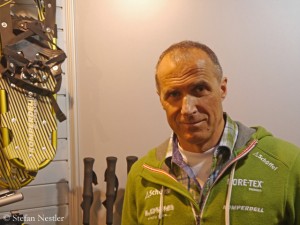
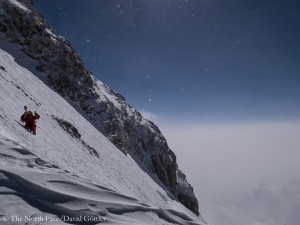
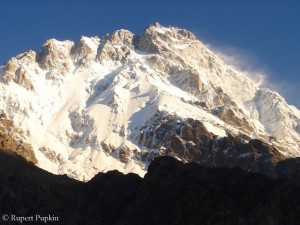
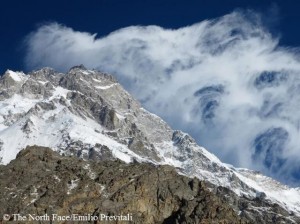
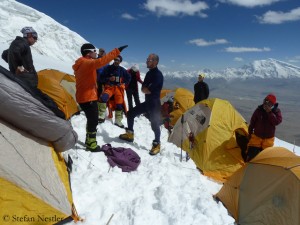
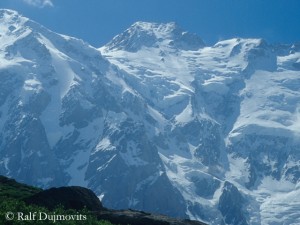
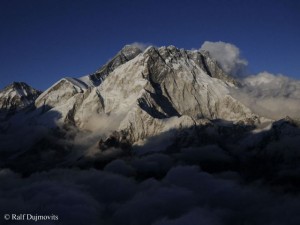
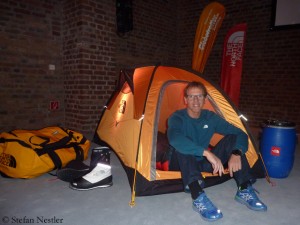
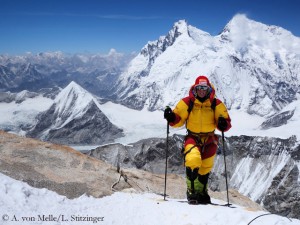
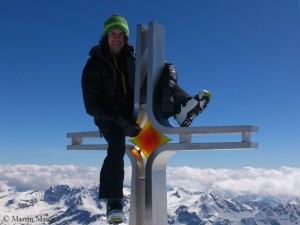
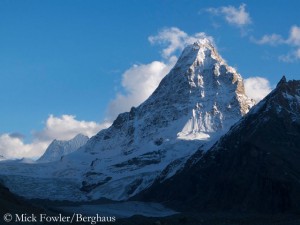
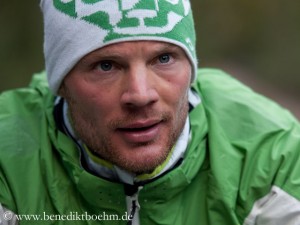
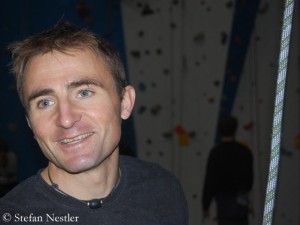





Feedback